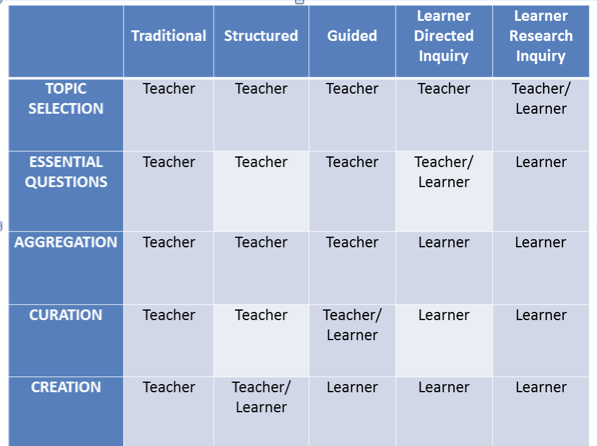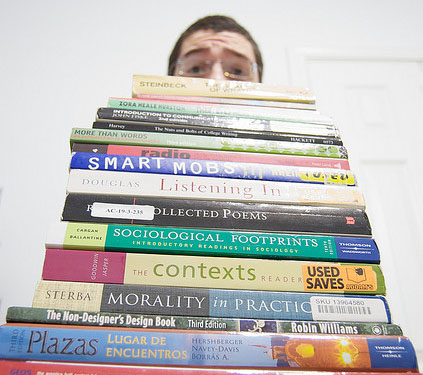Also try Paper.li or The Twitted Times, which will sift through your connections’ resources and organize them.
2. CURATION. While aggregation is collecting Web sites, the process of curation involves a deeper analysis of those sites to select the ones that have the most relevant information for a particular topic. Use your subject area syllabus, state standards or learning objectives to hand pick the content for a particular unit of study. Focus on the essential questions to help you choose resources. Use the most powerful potential of Web tools to make your textbook engaging by using images, videos and simulations.
One of the most user-friendly tools to post resources for your course is LiveBinders. Another great tool for curation is Scoop-it!, which allows you to create your own online magazine. (See how articles related to physics are curated on Scoop-it's PhysicsLearn.)
You can find many more useful tools for curation. Check out 30+ Cool Content Curation Tools for Personal and Professional Use. And if you're using an iPad, take a look at these curation apps.
3. CREATION. This is the most important (and fun) part of the process. You can create an online repository using a wiki digital tool such as Google Sites, PBworks or Wikispaces that organize your resources neatly. You could also use LiveBinders to select a template that allows you to include text for each of your resources. Learning management systems (LMS) such as Edmodo and Schoology are also great alternatives with neat features for educational social networking.
Google Sites also allows you to create and share Web pages, and has lots of customizable features. You can easily post images, directly embed videos from YouTube, lecture podcasts, and Google Docs for easy collaboration among your students. You can even embed assessments using Google Forms and a calendar.
And now, of course, if you have an Apple platform you can use the iBooks Author. Though it can only be used on Macs, the free app offers a drag-and-drop template that can be customized with images, interactive diagrams and videos to create a polished book.
TARGETING YOUR READERS
As you put your book together, consider some of these questions:
- How are learners going to use the information?
- How will they demonstrate what they've learned?
- Are they completing a document, creating an outline or answering a set of questions?
- What are the assessments associated with the material?
TEACHER AND LEARNER ROLES
The table below compares and contrasts the elements of the various levels of involvement of teachers and learners in the process of creating a textbook. You can use the traditional model where all steps of the process are managed by the teacher or move towards a learner-centered approach using the chart to determine which level is appropriate for your course.

TAKING CONTROL
Teachers as curators: Check out this unit on Projectile Motion, which includes content information, exercises, a virtual lab and a couple of assessments and this wiki from Craig Savage, which contains his resources for AP Biology and AP Psychology.
Students as curators: American Democracy in Action, a digital textbook for AP US Government created by seniors at St. Gregory College Preparatory School. For excellent strategies to involve your students take a look at Silvia Tolisano's Students Becoming Curators of Information.
RESOURCES TO GET YOU STARTED
iTunesU: This free app enables video, audio, and an integrated Learning Management System with available push notifications options.
CK-12 Foundation: You can customize your own FlexBooks with open-content in all subject areas.
Open Culture Links: 400 Free Online Courses from Top Universities
National Repository of Online Courses: Algebra, Calculus, History, Biology, Environmental Science,Physics and World Religions.
Cybrary Man Educational Resources
And much more: K-5 Resources, Language Arts/ English, Math, History/Social Studies, Science, World Languages.
Ready to ditch your textbook yet?
Dolores Gende is the Director of Instructional Technology, Science Department Head and Honors Physics teacher at Parish Episcopal School in Dallas, TX.



